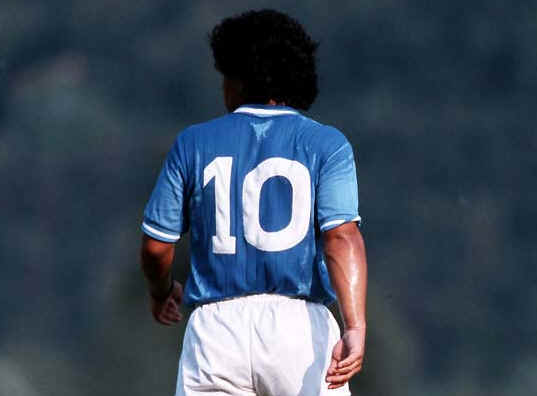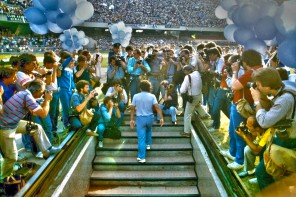10 is the magic number
Never in sport has a number gained such a cult following – a symbol of creativity and invention, of imagination and entertainment, of artistry and magic. The fantasisti (natural born playmakers) stood against the pragmatism of hard-line tactics and overbearing athleticism which has been on the increase over the years, and has become prevalent in the modern game.
Over the last 15 years, tactics, along with the growing distrust by managers who saw this type of player as a mere luxury, have forced today’s fantasista to adapt, taking on new positions and responsibilities.
Indeed the true number 10s of old have all but vanished from today’s game. As Jonathan Wilson described in a piece for 4-4-2 magazine, it’s become “…increasingly harder for a classical playmaker to find a role,” and “the players who would have been playmakers had to find new roles”.
That’s not to say they do not entirely exist however, albeit in another form. We only have to look at the likes of Lionel Messi, Ronaldinho, Andres Iniesta and Wesley Sneijder to see the new breed in effect.
These players have flourished in the new interpretation, but their roots will always remain within the spirit of the classical number 10 – the fantasista.
So what makes a classic fantasista?
Is it all in the number? As stated, 10 is the magic number. The shirt is a symbol. However, with the introduction of squad numbers it was quite possible for the team’s fantasista to adorn another number. Zinedine Zidane is case in point. At Juventus he wore 21, whilst at Real Madrid he was their no 5. However, internationally for France there was only one choice at no 10. So in essence, the classic fantasista embodies the symbol of the number 10 shirt.
What else? Well, the fantasista was usually an icon; portrayed as a glamour figure, a unique character adored by their fans and a symbol of all things expressive – the creative genius. They were often seen as exotic and precocious, rare and precious. If they failed to function, their team often suffered – they were the conductors of the team. At the height of his power no other player could come close to his natural talent on the football pitch.
Position and attributes
The fantasista was usually deployed just behind the striker/s in a role that was given free reign, but more often than not adopting central positions. Slight adjustments on the role varied and tended to fall into two categories: 1. the more of a forward than a midfielder, or 2. the more of a midfielder than a forward. However what always remained constant was his skillset, and a lack of defensive duties.
Weapons of choice were usually unrivaled technique, sublime close control and dribbling skills. Seemingly supernatural vision and a supreme sense of awareness and ability to inspire. Charged with both scoring and creating goals, they were often deadly from set-pieces – with spectacular free-kicks a particular common repertoire. As very cool finishers the fantasista often finished amongst the highest scorers of their team…and often provided more assists than they scored.
These mystical players went by many names throughout various countries: the playmaker, trequartista, enganche, ponta da lanca, in the hole, or simply ‘the no.10’. One thing is universal however, without them, football would be nowhere near as spectacular.
Fantasisti, we salute you!






Oh my goodness! Impressive article dude! Thank you so much, However I am encountering troubles with your RSS.
I don’t understand why I can’t join it. Is there anybody
getting similar RSS problems? Anybody who knows the solution can you kindly
respond? Thanx!!